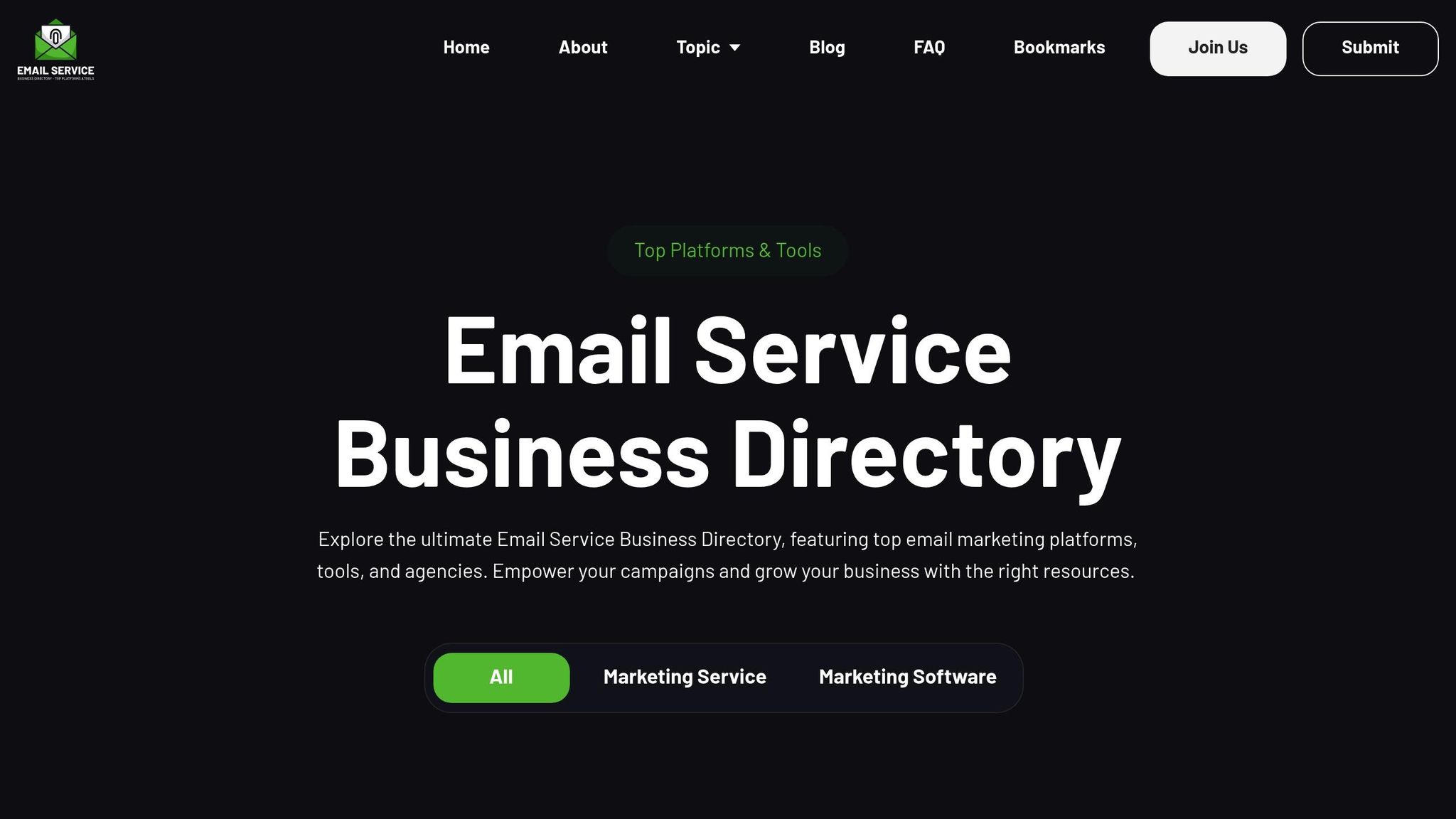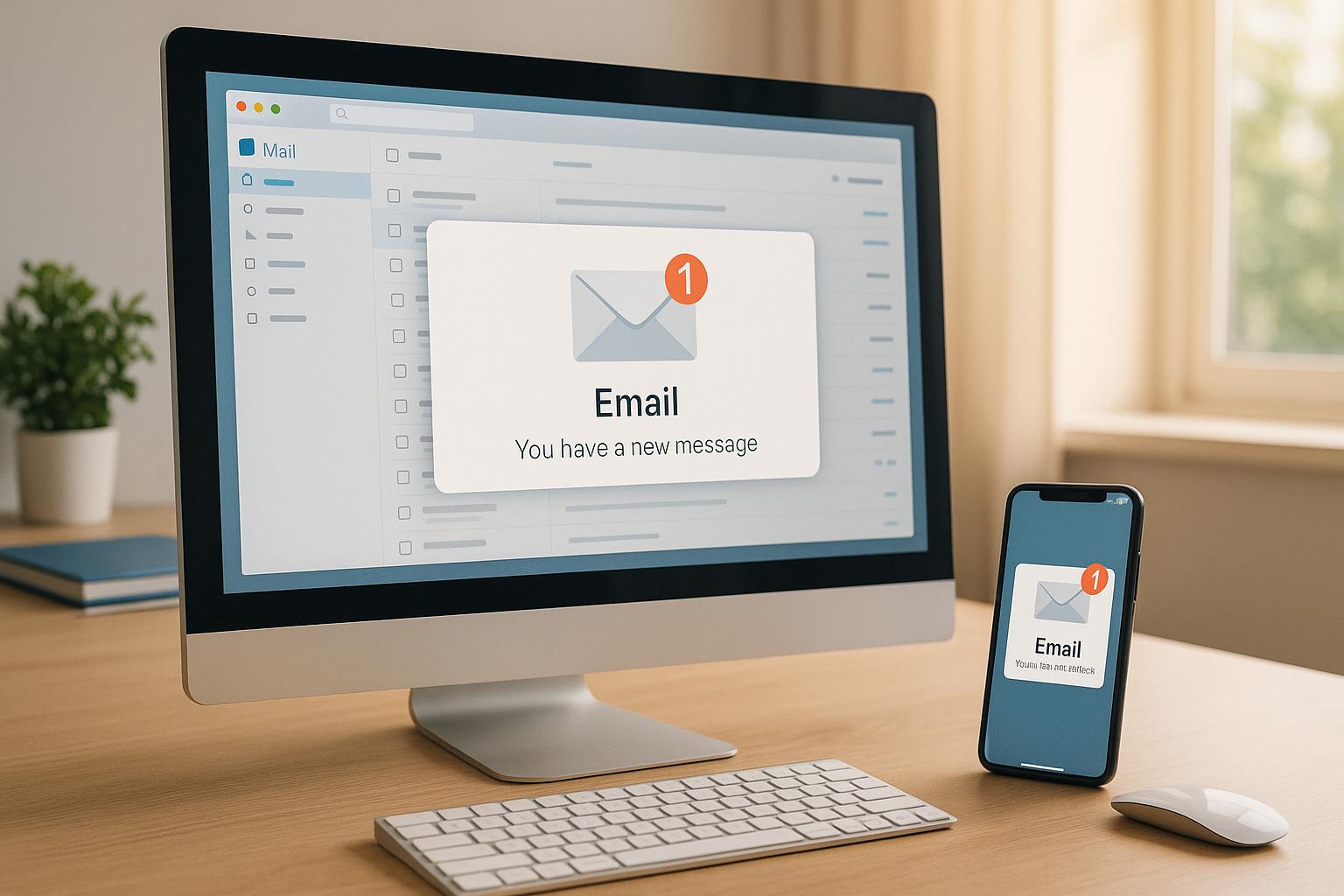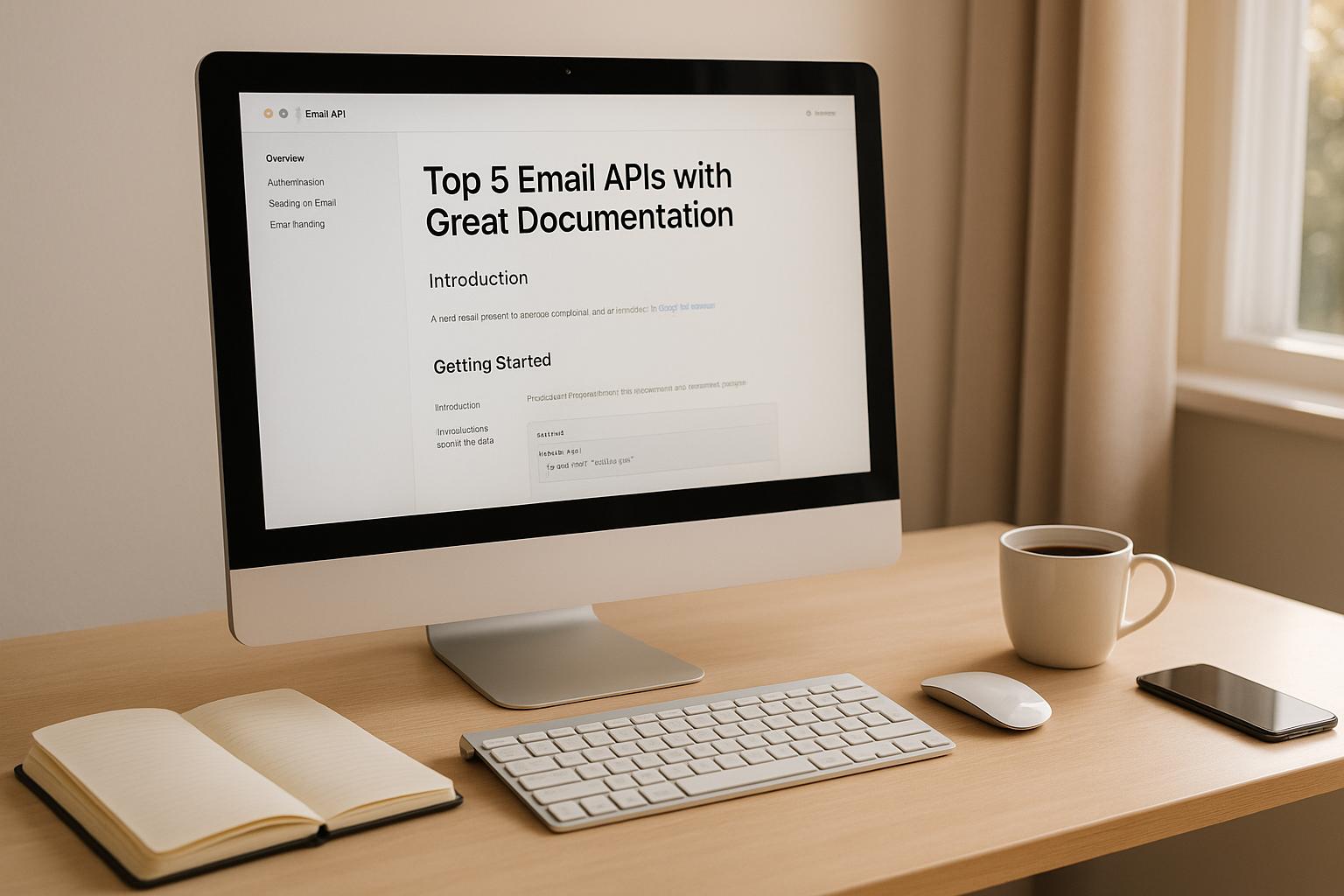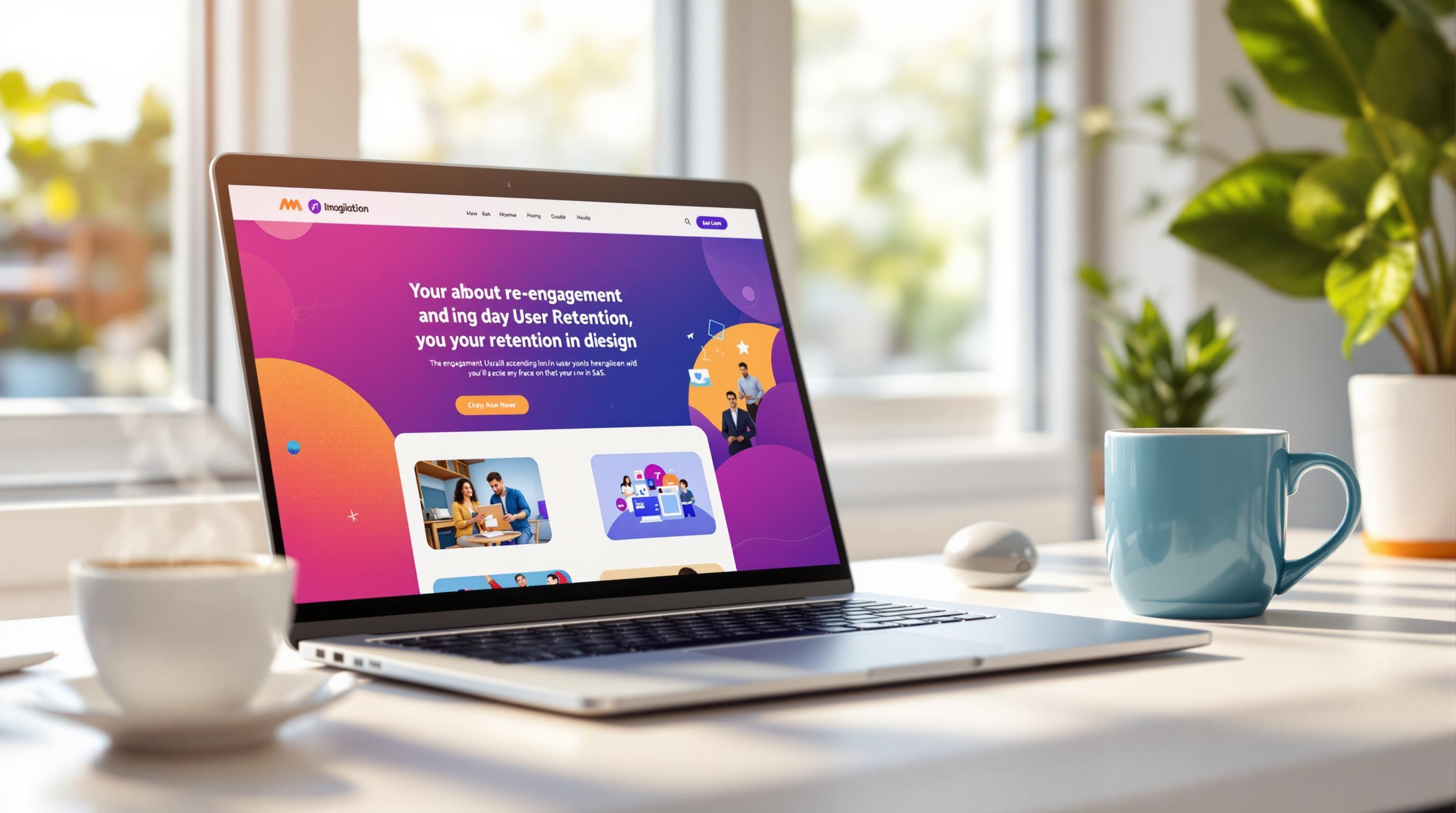Engagement segmentation divides your email subscribers based on how they interact with your emails - like opens, clicks, and conversions. This approach improves email performance by tailoring content to different groups: highly engaged, moderately engaged, and inactive subscribers. Research shows segmented campaigns can achieve 30% higher open rates and 50% more clicks compared to generic emails.
Here’s why engagement segmentation works:
- Better Deliverability: Engaged subscribers improve your sender reputation, keeping emails out of spam folders.
- Higher Revenue: Targeted offers to active subscribers drive more sales.
- Efficient Resource Use: Focus efforts on users most likely to respond.
- Track key metrics like open rates, clicks, and recency of engagement.
- Group subscribers into segments (e.g., highly engaged, inactive).
- Use automation to adjust messaging based on behavior.
- Regularly update and refine segments to match changing activity.
Key takeaway: Sending the right email to the right audience at the right time boosts ROI and strengthens customer relationships. By leveraging tools with advanced analytics and automation, you can streamline this process and make your campaigns more effective.
How Does Email Campaign Segmentation Impact ROI? - TheEmailToolbox.com
Benefits of Engagement Segmentation
Engagement segmentation isn't just a strategy - it’s a game-changer for email marketing. By analyzing subscriber behavior, this approach allows you to send messages that resonate, improving deliverability, boosting revenue, and making better use of your resources. It transforms how your campaigns perform by aligning content with what your audience actually wants.
Better Deliverability and Customer Experience
When your emails go to engaged subscribers, email service providers take notice. These providers track how recipients interact with your emails, and a positive response enhances your sender reputation. This, in turn, improves your chances of landing in the inbox rather than the spam folder.
Engaged subscribers are more likely to open, click, and interact with your emails. By tailoring content to their behavior, you create a better experience for them. This personalized approach not only reduces unsubscribe rates but also builds stronger, more lasting relationships with your audience.
Higher Revenue from Targeted Campaigns
Targeted campaigns are a revenue powerhouse. By aligning offers with what your subscribers are interested in, you increase the likelihood of conversions. Engaged subscribers, who’ve already shown interest in your brand, are particularly receptive to personalized promotions and product updates.
Adjusting your approach based on engagement levels also helps. For example, you might send more frequent emails to active subscribers while scaling back for less engaged ones. This balance keeps your campaigns effective, prevents email fatigue, and ensures you’re maximizing revenue opportunities. The result? A stronger return on investment with every email sent.
Segmented vs. Non-Segmented Campaigns
The difference between segmented and non-segmented campaigns is striking. Here’s a quick look:
| Aspect | Segmented Campaigns | Non-Segmented Campaigns |
|---|---|---|
| Open Rates | Higher due to personalized content | Lower with generic messaging |
| Click-Through Rates | More clicks thanks to relevance | Fewer clicks overall |
| Revenue Generation | Drives stronger sales with targeted offers | Misses opportunities with broad messaging |
| Deliverability | Improved sender reputation | Higher risk of spam complaints and unsubscribes |
| Customer Retention | Builds long-term loyalty | Higher churn from irrelevant content |
| Resource Efficiency | Focuses efforts on engaged audiences | Wastes resources on unresponsive users |
| Personalization | Tailors messages to engagement levels | Generic, one-size-fits-all approach |
How to Implement Engagement Segmentation
To make your email marketing more effective, focus on setting clear metrics, gathering critical data, and creating segments that deliver meaningful results. Here’s how you can do it step by step.
Define Key Engagement Metrics
Start by identifying the metrics that matter most for understanding your audience's behavior:
- Open rates: These show how well your subject lines grab attention and encourage subscribers to open your emails.
- Click-through rates: These measure deeper engagement, indicating when subscribers take action by clicking on links.
- Conversion rates: These track actions like purchases or sign-ups, directly linking engagement to revenue.
- Unsubscribe patterns: Monitoring these helps fine-tune your sending frequency and avoid overwhelming your audience.
- Recency of engagement: This is crucial for spotting changes in interest. For example, a subscriber who was highly active last month but hasn’t engaged recently may need a different approach than someone who opens emails regularly but rarely clicks.
By combining these metrics, you can build a clear picture of your subscribers' interest levels. Once you’ve defined your metrics, dive into the data to uncover actionable insights.
Analyze Subscriber Behavior Data
Begin collecting data as soon as someone subscribes. Track key actions like email opens, clicks, time spent reading, and purchase history. While most email platforms automatically gather this information, organizing and interpreting it requires careful planning.
Look for behavioral patterns over time. For instance, identify seasonal trends, popular content types, or signs of waning interest to fine-tune your strategy.
Use engagement scoring to simplify complex data. Assign points to different actions (e.g., 1 point for an open, 3 points for a click, 10 points for a purchase) and calculate rolling scores over a set period (e.g., 30 or 90 days). This helps you track engagement trends at a glance.
Set up segmentation triggers to automate the process. For example, if someone hasn’t opened an email in 60 days, they can automatically move from a "highly engaged" segment to an "at-risk" group.
Incorporate cross-channel data when possible. Subscribers who interact with your social media, visit your website, or engage with customer service may hold more value than email metrics alone suggest. This broader view helps refine your segmentation.
With these insights, you can create meaningful subscriber categories.
Create and Manage Segments
Use your metrics and behavioral data to group subscribers into clear engagement levels. Start with three core segments:
- Highly engaged subscribers: These are your most active users, opening over 70% of emails and clicking frequently. They’re more receptive to frequent communication, including exclusive offers, early access promotions, and detailed product updates. These subscribers are also great candidates for referral programs.
- Moderately engaged subscribers: These individuals open 30-70% of your emails and click occasionally. Focus on nurturing this group by delivering valuable content that builds trust and gradually introduces promotional messages. Experiment with different sending frequencies to see what resonates.
- Inactive subscribers: These are subscribers who haven’t engaged in 60+ days. Win them back with compelling incentives, such as discounts or personalized messages.
For more advanced segmentation, go beyond engagement levels. Factor in purchase behavior, content preferences, or lifecycle stages. For example, new subscribers might receive a welcome series, while loyal customers could get rewards for their long-term support. Geographic segments can help you tailor timing and offers to specific regions.
Keep your segments up-to-date with regular maintenance. Review performance monthly and adjust criteria as needed. For instance, a subscriber who re-engages after a win-back campaign should move into a more active segment and receive updated messaging. Similarly, highly engaged users who stop interacting might need a different approach to rekindle their interest.
Consider using dynamic segmentation to automate this process. With automated rules, subscribers can shift between segments based on their most recent behavior, ensuring your messaging stays relevant and timely.
Start with the basics, experiment with different strategies, and refine your approach based on what resonates most with your audience and industry.
sbb-itb-6e7333f
Best Practices for ROI with Engagement Segmentation
Once you've segmented your audience, the next step is putting that framework to work. To maximize ROI, focus on personalized content, re-engagement strategies, and fine-tuning your approach over time.
Personalize Content and Automate Campaigns
Tailor your content to match the engagement level of your subscribers. For those highly engaged, go straight to the point - product details, exclusive updates, and special offers work well here. These subscribers have already shown strong interest, so you can confidently highlight promotions or new launches.
For moderately engaged subscribers, the goal is to build trust and nurture their interest. Share helpful resources like educational articles, customer success stories, or industry tips. This type of content encourages them to engage more deeply, setting the stage for future conversions.
Automation can make managing these segments easier and more effective. For example, if a highly engaged subscriber clicks on a product link but doesn’t make a purchase, you could send a follow-up email within 24 hours featuring customer reviews or a time-sensitive discount. For moderately engaged users, automated campaigns could deliver a series of valuable content pieces over several days.
Dynamic content blocks and conditional logic take personalization a step further. These tools allow you to tailor product recommendations, subject lines, and calls-to-action based on a subscriber’s engagement history - all within a single email template.
Timing also plays a big role. Highly engaged subscribers might appreciate frequent updates, while moderately engaged ones may prefer fewer but more meaningful touchpoints. Experiment with different sending frequencies to find what drives the best results without overwhelming your audience.
While personalization is key, don’t overlook the importance of reactivating subscribers who’ve gone quiet.
Re-engage Inactive Subscribers
Inactive subscribers represent untapped potential. Research shows that around 22.5% of email subscribers go inactive annually, but re-engagement campaigns can recover up to 45% of them. Plus, it’s much cheaper to win back an inactive subscriber than to acquire a new one - it costs five times as much to attract a new customer.
Start your re-engagement efforts with a subject line that grabs attention without sounding desperate. Messages like "We miss you" or "It’s been a while" feel personal and inviting. Avoid overly aggressive offers right out of the gate, as these can cheapen your brand. Instead, focus on reminding subscribers why they joined in the first place - whether it’s exclusive insights, exciting updates, or customer success stories.
Including a preference center in your re-engagement emails can also make a big difference. If inactivity stems from receiving too many emails or irrelevant content, giving subscribers control over frequency or topics can reignite their interest.
Establish a clear re-engagement plan with personalized follow-ups. If a subscriber remains unresponsive, it’s better to remove them from your active list. This helps protect your sender reputation and ensures your emails are landing in the inboxes of those who are still interested.
Once you’ve re-engaged a subscriber, monitor their behavior closely. Initially, categorize them as "recently re-engaged" and track their activity before moving them to a more active segment.
Test and Adjust Segmentation Strategies
Segmentation isn’t a one-and-done process - it requires ongoing testing and refinement. Audience behaviors and market conditions change, so it’s essential to revisit your segmentation criteria regularly. Quarterly reviews are a good starting point for analyzing segment performance and making adjustments.
A/B testing can help you fine-tune your approach. For instance, experiment with different inactivity thresholds - such as 45, 60, or 90 days - to figure out which timeframe best predicts future engagement. Similarly, test content strategies to see what resonates most with each segment. For moderately engaged subscribers, compare the impact of educational content versus promotional offers. For highly engaged ones, try testing exclusive perks against early access deals.
Track how subscribers move between segments to identify trends. If many highly engaged subscribers are slipping into the moderate category, it might signal issues like declining content quality or overly frequent emails. On the flip side, monitor which re-engagement tactics are most effective at bringing inactive subscribers back into the fold.
Cohort analysis can also provide valuable insights. By observing groups of subscribers who joined at the same time, you can uncover lifecycle trends and adjust your strategies accordingly.
Finally, stay mindful of external factors like seasonal trends, economic shifts, or industry events. These can influence subscriber behavior, so be ready to adapt your segmentation strategies. For instance, creating temporary segments for holiday campaigns can help you capitalize on seasonal opportunities.
Choosing the Right Tools for Engagement Segmentation
When fine-tuning your engagement segmentation strategy, the tools you choose can make or break your success. To achieve effective results, you'll need a platform equipped with advanced segmentation capabilities.
Overview of the Email Service Business Directory

The Email Service Business Directory is a curated resource designed to simplify your search for the ideal email marketing platform. It brings together a variety of tools, software, and agencies, allowing you to compare options and find the perfect fit for your needs.
Whether you're focused on e-commerce campaigns, customer retention, or drip campaigns, this directory connects your specific goals with the right platform features. It includes solutions tailored for transactional emails, abandoned cart recovery, enterprise-level operations, and B2B marketing, ensuring you have access to tools that align with your segmentation objectives.
Platform Features That Matter for Engagement Segmentation
To build a strong segmentation strategy, look for platforms that offer advanced analytics. These tools provide detailed reports on opens, clicks, and overall engagement - data you’ll need to accurately segment subscribers and monitor their progression through different categories.
Another must-have is automation for behavior-triggered campaigns. This feature lets you engage subscribers based on their actions, creating more personalized experiences. Integration with CRM systems is equally important, as it allows you to sync engagement data with purchase histories and customer support interactions. Together, these features provide a comprehensive view of each subscriber’s journey with your brand.
Finally, platforms with generous contact management limits ensure your campaigns don't hit a wall as your subscriber list grows. This flexibility directly boosts the performance of your segmented outreach efforts.
Plans and Pricing for Email Marketing Platforms
Pricing for email marketing platforms typically varies based on features and the number of contacts supported. To maximize your return on investment, choose a plan that aligns with both your current needs and your long-term segmentation goals.
| Plan Level | Typical Price Range | Key Features | Best For |
|---|---|---|---|
| Basic | $299 | Email marketing tools, Basic analytics | Small businesses with up to 1,000 contacts |
| Advanced | $999 | Automation, Advanced analytics, CRM integration | Growing businesses with up to 10,000 contacts |
| Enterprise | $2,999 | Full feature access, Priority support, Unlimited contacts | Large enterprises with complex segmentation needs |
Basic plans are often limited to simple list management and basic reporting, which may not be enough for sophisticated segmentation strategies. The $999 advanced tier is a popular choice for businesses aiming to leverage automation, detailed analytics, and CRM integration. For enterprises managing large subscriber lists and intricate segmentation, the $2,999 plan offers full access to features, unlimited contacts, and priority support.
Scalability is key when selecting a platform. Opt for a solution that can grow with your business, so you won't face costly migrations down the line. The right platform will support your segmentation efforts and help you achieve the highest possible ROI from your email campaigns.
Conclusion: Driving ROI with Engagement Segmentation
Engagement segmentation takes email marketing from a scattershot approach to a focused, revenue-generating strategy. By categorizing your subscribers based on how they interact with your emails, you can craft campaigns that meet each customer exactly where they are in their journey with your brand.
The financial upside is undeniable. Segmented campaigns consistently outperform generic ones, delivering better results while safeguarding your sender reputation. Highly engaged subscribers stay connected, while less active ones get the space they need without being overwhelmed.
To succeed, your strategy should focus on three key pillars: establishing clear engagement metrics, systematically analyzing subscriber behavior, and building dynamic segments that adapt as your audience evolves. Pair these fundamentals with personalized content, automated workflows, and regular testing to optimize your return on investment.
Choosing the right platform is just as important. Look for tools that offer advanced analytics, behavior-based automation, and seamless CRM integration. Whether your budget is $299 for essential features or $2,999 for enterprise-level capabilities, your platform should align with your current needs and future growth plans. As mentioned earlier, platform options are available for businesses of all sizes.
To simplify platform selection, the Email Service Business Directory connects you with solutions tailored to your specific segmentation needs. Whether you’re focusing on e-commerce campaigns, abandoned cart recovery, B2B marketing, or customer retention, this directory helps you find tools that complement your strategy.
When your segmentation plan and tools work together, you unlock the potential for ongoing success. As your subscriber base expands and behaviors shift, fine-tuning your segmentation approach ensures you’re always maximizing ROI.
There’s no better time to start. By implementing engagement segmentation now, you can transform your email marketing from generic blasts into personalized campaigns that drive measurable business results.
FAQs
How does engagement-based segmentation improve email deliverability and keep emails out of spam folders?
Engagement-based segmentation helps improve email deliverability by tailoring your content to match how actively subscribers interact with your emails. By sending targeted messages to those who are more engaged, you boost the chances of actions like opens and clicks while minimizing the risks of spam complaints or unsubscribes.
Focusing on your most active subscribers signals to email service providers that your messages are worth delivering, building trust and reducing the likelihood of being marked as spam. At the same time, this approach avoids overloading less-engaged users, which helps protect your sender reputation and enhances the overall success of your campaigns.
How can I re-engage inactive email subscribers, and why does it matter?
Reconnecting with inactive email subscribers can be done effectively by segmenting your audience based on their engagement levels, understanding the reasons behind their inactivity, and offering personalized incentives like exclusive discounts, special deals, or content tailored to their interests. These efforts highlight the value of your emails and encourage subscribers to re-engage.
Why is this important? Re-engagement campaigns play a key role in keeping your email list clean and responsive, boosting deliverability rates, and making the most of your marketing investment. By turning inactive subscribers into active participants, you can refresh your email strategy and build a stronger relationship with your audience.
What should businesses look for in an email marketing platform to effectively use engagement segmentation?
To make engagement segmentation work seamlessly, it’s crucial to pick an email marketing platform with advanced segmentation tools. These should let you organize subscribers based on engagement levels, behaviors, and demographics. With these features, you can craft campaigns that speak directly to your audience’s interests and actions.
It’s also smart to go for platforms that offer automation features and real-time analytics. Automation simplifies the process of sending personalized messages, while real-time analytics give you the insights needed to track performance and tweak your approach to get the best results. Choosing the right platform can make your email marketing more efficient and effective.


